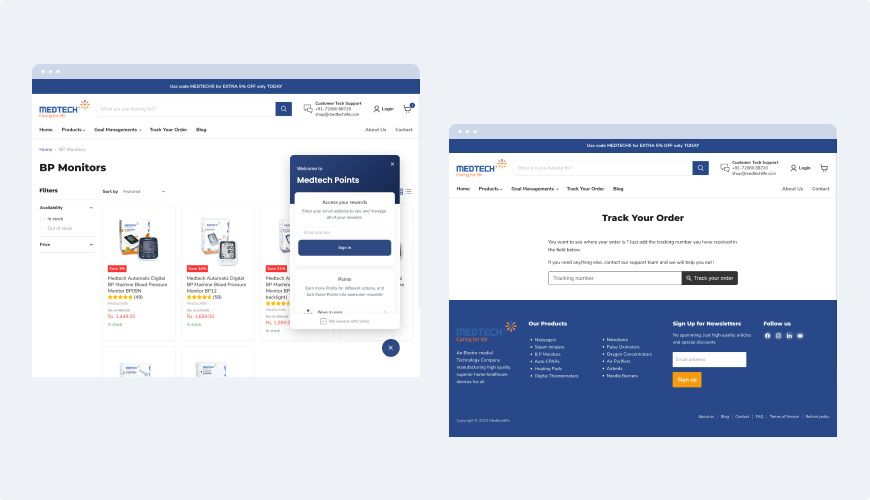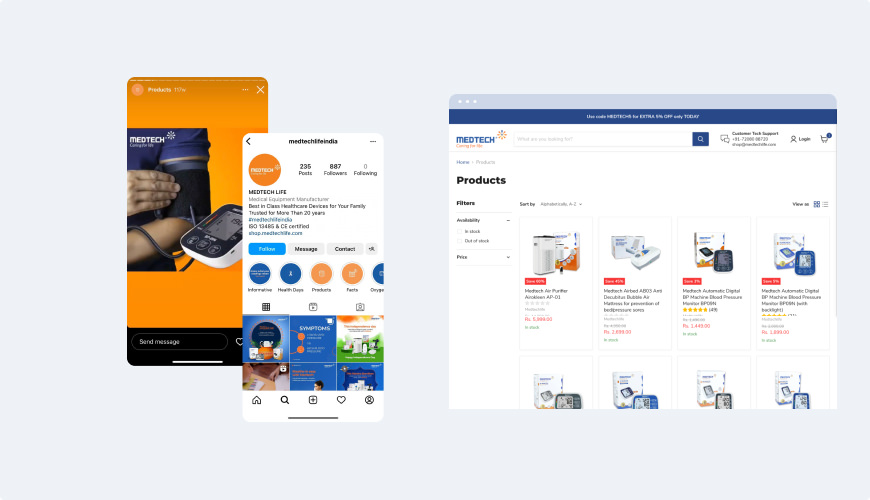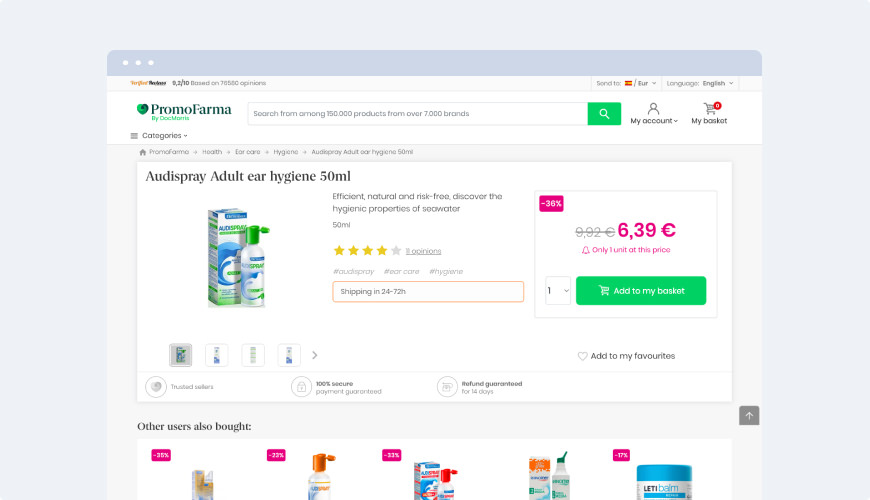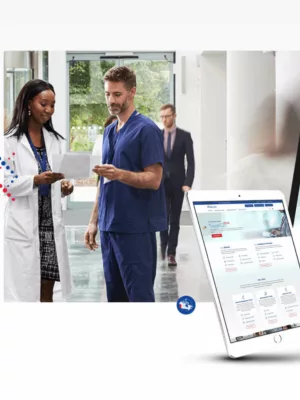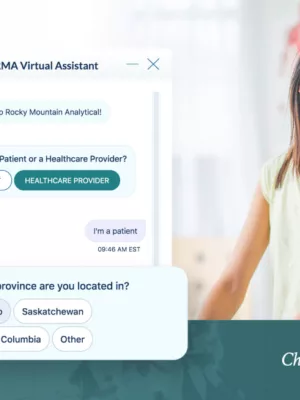
Healthcare and Medtech are quickly becoming sectors of the economy in which e-commerce experience plays an important role. In this role, e-commerce is transforming what medical organizations should offer and influencing their digital products. Let’s explore this influence and discuss key components of a competitive website.
Why E-Commerce in Healthcare Matters
Healthcare is considered the next big thing in the online retailing space, with a projected compound annual growth rate of 18.7% up until 2026. The two biggest growth factors will be rising consumer spending on medical products and high internet penetration. The roles that e-commerce serves for users should also be seen as contributing factors:
- Offering convenience
- Expanding the range of available products
- Providing access to information (about companies, products, and the industry)
- Establishing two-way communication through feedback and reviews
And the influence e-commerce exerts over the healthcare sector can be boiled down to:
- Changing the way people shop (streamlines processes)
- Giving better quality care
- Improving patient experience
- Establishing online presence (i.e., brand building)
Key Features of E-Commerce Websites in Healthcare
Analyzing the best e-commerce websites from a user’s perspective, here are the most important features to include.
Usability Features
1. User-Friendly Navigation
All tabs and products should be logically systematized. Depending on the user’s preferences, the categories should provide options—search by brand, the most popular, etc.
Plus, a clean, concise, and readable footer can link to products, services, and information that you deem relevant to the user.
2. Site Search
The site’s search engine should be configured in a way that helps users bypass navigation. With specific answers and product suggestions, it will help move shoppers closer to purchase.
3. Order Tracking
Offer multiple shipping options and make it simple to check an order’s status. Order confirmation emails are also helpful, but only as an added element to the website feature.
4. Chatbots
As a more advanced navigation tool and an automated assistant, a chatbot can provide support during off-hours. The chatbot should also have a crosslinking feature, directing users to products, categories, and CMS pages.
5. Flexible Payment Options
Cater to different audiences with their preferred payment method. Or at least have a healthy mix of different ones—debit and credit cards, payment services (Apple Pay, Google Pay, PayPal, Affirm, etc.), and buy-now-pay-later services.
6. Policy Transparency
Websites with easy-to-understand, transparent operating policies are perceived as more trustworthy. So, make policies concerning privacy, returns, warranties, etc., easily available.
7. Accessible Design
Help users overcome shopping limitations through text clarity, good contrast, keyboard navigation, audio descriptions, offering the option to enlarge buttons and controls, etc.
8. Speed and Performance Optimization
A time delay negatively affects searchability, user experience, and, subsequently, sales. Solve the issue by migrating to a faster e-commerce platform and looking for performance bottlenecks.
9. Extra Points For a Standalone Mobile App
Consider developing an app to go with the website to provide the utmost UX on mobile devices. This doesn’t negate the need for a mobile-friendly store; it only expands your opportunities—push notifications, image resolution, and a lot more.
Marketing Features
1. Integrations
An e-commerce website can be elevated from a basic online store with third-party integrations. The streamlined multi-step processes for both shoppers and admins can be ensured by CRM, business intelligence tools, accounting software, reporting suites, and more.
2. Email Opt-In
Build your email list and reach your subscribers with future sales and email promotions. The opt-in form in the header and footer should capture more email addresses than just the contact page.
3. Flexible Discount Options
Highlight the best deals at the top of the website and include a coupon or discount box on the checkout page. To make the deal seem even more attractive, allow users to redeem codes in bundles.
4. Product Media Content
Include high-quality photos, videos, and 3D and AR features (if applicable for your products). Make descriptions as illustrative as possible.
5. Integration With Social Media
Increase traffic and engagement by integrating social media tabs into the website and enable crosslinking for an omnichannel experience.
Product Profile Features
1. Product Reviews
Display reviews and ratings for social proof and consider integrating the product with an independent source, such as Google Reviews, to increase trust. The option to rate reviews as useful can help highlight some of them.
2. FAQ
Try to answer top pre-sales questions to bridge the gap between users’ thoughts about your products, services, and support. Create FAQ sections for each product page, as well as the entire store, to address payments, shipping, returns, etc.
3. Product Filters
Give users the option to filter products based on not only price, popularity, etc., but also other meaningful criteria like delivery or availability. The more efficiently the customer can locate a product with fast availability, the more likely the purchase.
4. Carousels
A carousel (e.g., slideshow) of valid offers allows you to squeeze lots of products into prime real estate. Instead of just relying on their knowledge of the website or product featured, you can control users’ attention.
How Can E-Commerce Features Benefit Businesses?
Savvy organizations adopting the latest online shopping solutions and strategies are already reaping the benefits:
- More products at lower prices
- More help for patients/customers, less strain on professionals
- Better security for patient privacy and information
Remember that a fantastic shopping experience doesn’t have to reinvent the wheel to reap these benefits. Focus on a set of key features, see if new trends in e-commerce arise, and implement new features whenever appropriate.



